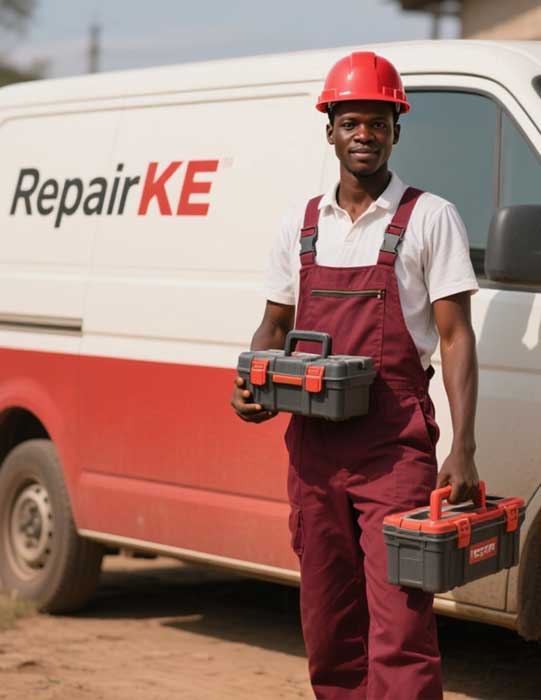
Coffee Makers: Common Faults and Repair Solutions
Coffee makers are essential appliances for many households, delivering the perfect brew to kickstart the day. However, like any machine, they can develop faults over time due to wear and tear, improper maintenance, or manufacturing defects. This article explores the most common issues faced by coffee maker owners> users and provides practical repair solutions to keep your machine running smoothly.
1. Coffee Maker Won’t Turn On
The Problem
One of the most frustrating issues is when your coffee maker refuses to power on. This could be due to electrical issues, a faulty power cord, or internal component failure.
Possible Causes
- Loose or damaged power cord.
- Blown fuse or tripped circuit breaker.
- Faulty power switch or internal wiring.
- Malfunctioning control board.
Repair Solutions
- Check the Power Supply: Ensure the coffee maker is plugged into a working outlet. Test the outlet with another device to confirm it’s functional.
- Inspect the Power Cord: Look for visible damage like fraying or cuts. If damaged, replace the cord with a compatible one (consult the manufacturer or a professional).
- Reset the Machine: Unplug the coffee maker for 10–15 minutes to reset the internal electronics. Plug it back in and try again.
- Examine Internal Components: If comfortable, open the machine (ensure it’s unplugged) and check for loose connections or blown fuses. Replace fuses with identical ones, available at hardware stores. For complex issues like a faulty control board, contact a professional technician or the manufacturer.
2. Leaks or Water Spills
The Problem
Leaks are a common complaint, with water pooling under the machine or dripping during brewing. This can create a mess and potentially damage the machine or countertop.
Possible Causes
- Cracked or loose water reservoir.
- Clogged or damaged tubes and seals.
- Overfilled water tank.
- Improperly seated carafe or filter basket.
Repair Solutions
- Inspect the Reservoir: Check for cracks or loose fittings. If cracked, replace the reservoir (order from the manufacturer or a trusted supplier). Tighten any loose connections.
- Clean the System: Mineral buildup from hard water can clog tubes and cause leaks. Descale the machine using a 1:1 mixture of white vinegar and water. Run the solution through a brew cycle, followed by two cycles of plain water to rinse.
- Check Seals and Gaskets: Worn seals or gaskets can cause leaks. Inspect and replace them if they’re cracked or brittle. Use food-grade silicone seals for safety.
- Avoid Overfilling: Ensure the water level doesn’t exceed the maximum fill line. Double-check the carafe and filter basket are properly seated before brewing.
3. Coffee Tastes Bad or Weak
The Problem
If your coffee tastes off, bitter, or weaker than usual, the issue may lie with the machine rather than the beans or brewing method.
Possible Causes
- Dirty brewing components.
- Mineral buildup affecting water flow.
- Incorrect water temperature.
- Worn-out heating element.
Repair Solutions
- Clean Thoroughly: Coffee oils and residue can accumulate in the filter basket, carafe, and internal tubes, affecting flavor. Wash removable parts with warm, soapy water after each use. Run a descaling cycle (as described above) monthly to remove mineral deposits.
- Check Water Temperature: Coffee brews best at 195–205°F (90–96°C). If the water isn’t hot enough, the heating element may be failing. Test the temperature with a thermometer during brewing. If it’s off, contact a technician to replace the heating element.
- Use Fresh Water and Beans: Stale water or old coffee grounds can ruin the taste. Use filtered water and freshly ground beans for optimal flavor.
- Replace Filters: If your machine uses a water or coffee filter, replace it as recommended (typically every 1–2 months) to ensure clean brewing.
4. Slow Brewing or Clogged Flow
The Problem
When brewing takes longer than usual or the coffee dribbles out slowly, there’s likely a blockage or mechanical issue slowing the water flow.
Possible Causes
- Mineral buildup in tubes or valves.
- Clogged filter basket.
- Faulty pump or motor.
- Improper grind size.
Repair Solutions
- Descale the Machine: As mentioned, mineral buildup is a common culprit. Run a vinegar-water descaling cycle to clear blockages.
- Clean the Filter Basket: Coffee grounds can clog the basket, especially if the grind is too fine. Use the correct grind size (medium for drip machines) and clean the basket thoroughly after each use.
- Inspect the Pump: If descaling doesn’t help, the pump may be failing. Listen for unusual noises (e.g., grinding or humming) during brewing. Pump replacement is complex and often requires professional service.
- Check Valves: Some machines have one-way valves that can become stuck. Consult the manual to locate and clean them or seek professional help.
5. Grinder Issues (For Built-In Grinders)
The Problem
Coffee makers with built-in grinders can experience grinder jams, uneven grinds, or complete failure, affecting brew quality.
Possible Causes
- Coffee bean debris or oils clogging the grinder.
- Worn or dull grinder blades.
- Motor failure.
Repair Solutions
- Clean the Grinder: Unplug the machine and remove the grinder hopper. Use a brush or compressed air to clear out debris. Run a small amount of dry rice through the grinder to absorb oils (discard the rice afterward).
- Sharpen or Replace Blades: Dull blades produce inconsistent grinds. Some grinders allow blade replacement; check the manual or contact the manufacturer. Avoid using the grinder for non-coffee items, as this can dull blades faster.
- Test the Motor: If the grinder doesn’t spin, the motor may have failed. This typically requires professional repair or replacement, as motors are intricate.
Preventive Maintenance Tips
To minimize faults and extend your coffee maker’s lifespan, follow these maintenance practices:
- Regular Cleaning: Wash removable parts after every use and descale monthly.
- Use Filtered Water: Reduces mineral buildup and improves coffee taste.
- Store Properly: Keep the machine in a dry, cool place to prevent mold or electrical damage.
- Follow Manufacturer Guidelines: Adhere to the manual’s recommendations for usage, cleaning, and part replacements.
- Schedule Professional Servicing: For complex issues or annual checkups, consult a certified technician to catch problems early.
When to Replace Your Coffee Maker
If repairs are frequent, costly, or the machine is over 5–7 years old, it may be time to replace it. Modern coffee makers offer improved efficiency, better brewing technology, and enhanced durability. Compare repair costs to the price of a new model, and consider upgrading if repairs exceed 50% of the cost of a new unit.
Coffee makers are reliable companions for caffeine lovers, but they’re not immune to faults. By understanding common issues like power failures, leaks, poor coffee quality, slow brewing, and grinder problems, you can troubleshoot and repair most problems at home. Regular maintenance and timely repairs will keep your machine brewing perfect cups for years. For persistent or complex issues, don’t hesitate to contact the manufacturer or a professional technician to avoid further damage. With the right care, your coffee maker can remain a trusted part of your morning routine.




